Swiss Confederation: 13 Swiss cities
Rare and exceptional
Detail
Date of first map: 1572
Date of this map: 1582
Dimensions (without margins): 37 x 47,5 cm
Dimensions (including margins): 41,2 x 54 cm
Condition: good copper engraving. Minor foxing. Small tear (5 cm) to the lower edge.
Condition rating: A
Verso: text in French
Map reference: Koeman/van der Krogt IV 1 pp. 74, 102, 124; Taschen, Br. Hog., p.94.
From: Civitates Orbis Terrarum, vol. I.
In stock
Braun reports on most of the 13 Swiss cities:
SCHWYZ
“The town of Schwyz has given its name to the whole land of Switzerland, for it was the first to be established by those who came here from Sweden to find a place to settle. It is one of the three villages that formed an alliance against the despotism of the nobles.”
ZUG
“Zug is the name of both the town and the entire area bordering on Schwyz to the north and lying on Lacus Tuginus, or lake Zug.”
GLARUS
“Glarus, in latin Glarona, allied itself with the other Swiss in 1352. The inhabitants live from milk, cheese, butter and meat. The lakes provide them with fish, the forested mountains with birds and other game.”
BASLE (BASEL)
“The splendid city of Basle arose like the phoenix out of the ashes of the destroyed Roman city of Augusta Raurica and lies on both banks of the Rhine. The part on the Gallic side is called Greater Basle and is the old episcopal city, the other, on the German side, is called Lesser Basle; they are linked by a bridge over the Rhine. […] Pope Pius II founded its renowned university.”
ZÛRICH
“Zurich is an ancient settlement on a favorable site at the outflow of the large lake, at whose end the River Limmat, which flows into the lake not far from Glarus, branches off. […] The city holds a big corn market every week […]. The city obtains plenty of fish from Lake Zurich.”
BERNE (BERN)
“Berne was built by Berthold V. Duke of Zähringen, and took its name from the first bear that was caught here. It lies on a peninsula within the navigable Aare. It is surrounded by fertile fields but does not produce its own wine and it possesses three dead-straight roads that lead through the city from east to west.”
LUCERNE (LUZERN)
“Lucerne arose out of a monastery and gradually grew into a town; it takes the name from the lighthouse that stands on a bridge on the lake and in which in the old days a fire was lit in order to show the boatmen the right way.”
URI
“Uri is well protected by its natural location, for the south it is bounded by the Gotthard massif, to the east by the Crispalt, to the west by the mountain with thin summits, called the Furka, which is very difficult to climb, and to the north by Lake Lucerne. The Reuss flows past the town
SOLOTHURN
“Solothurn is one of the oldest and most important Swiss cities, situated on the gold-bearing River Aare, and is supposed to have been built very soon after Trier, so some say.”
SCHAFFHAUSEN
“Schaffhausen lies on the right-hand, German side of the Rhine and is linked to Swiss territory by three bridges. It allegedly derives its origins from a large Benedictine monastery that was founded in 1052.”
APPENZELL
“Appenzell means “Abbot’s cell”, since the Benedictine abbots owned Clanx castle here. It provided protection and shelter for the inhabitants at that time. And as its power grew with time, the name was applied not just to this place but to the whole area. Since good soldiers come from here, in 1513 Appenzell was accepted into the Old Swiss Confederation as the thirteenth member.”
The title of this map is: Decem et Tria Loca Confoederatorum Helvetiae
Related items
-
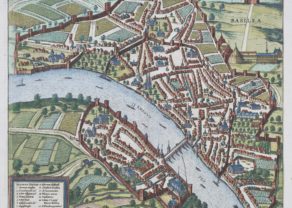
Basel – Basilia
by Georg Braun and Frans HogenbergPrice (without VAT, possibly to be added): €780,00 / $865,80 / £694,20 -
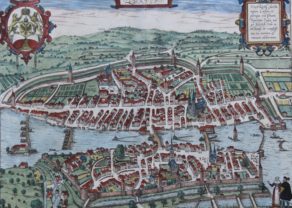
Zürich – Tigurum
by Georg Braun and Frans HogenbergPrice (without VAT, possibly to be added): €2 500,00 / $2 775,00 / £2 225,00One of the finest and most sought-after views of Zürich
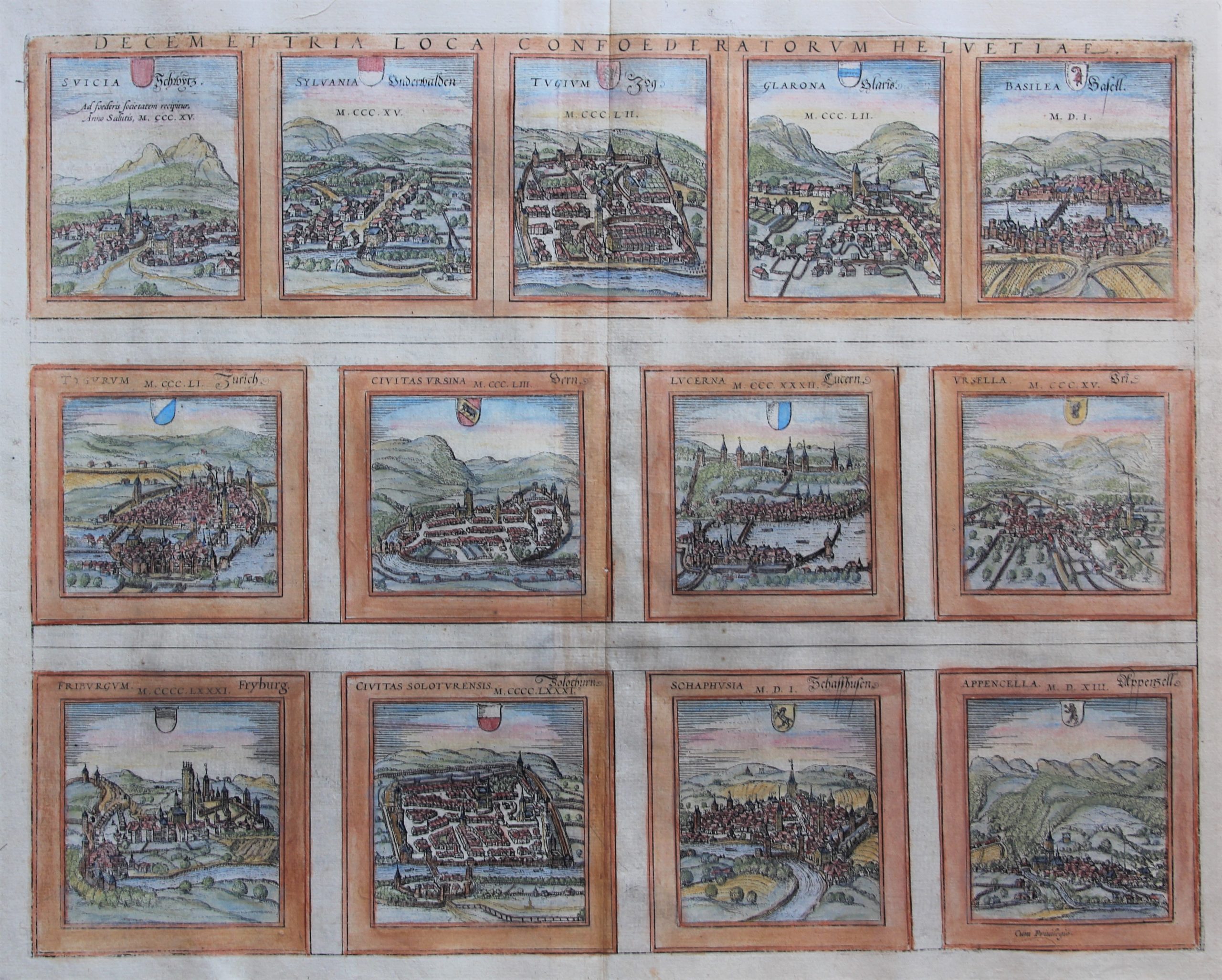
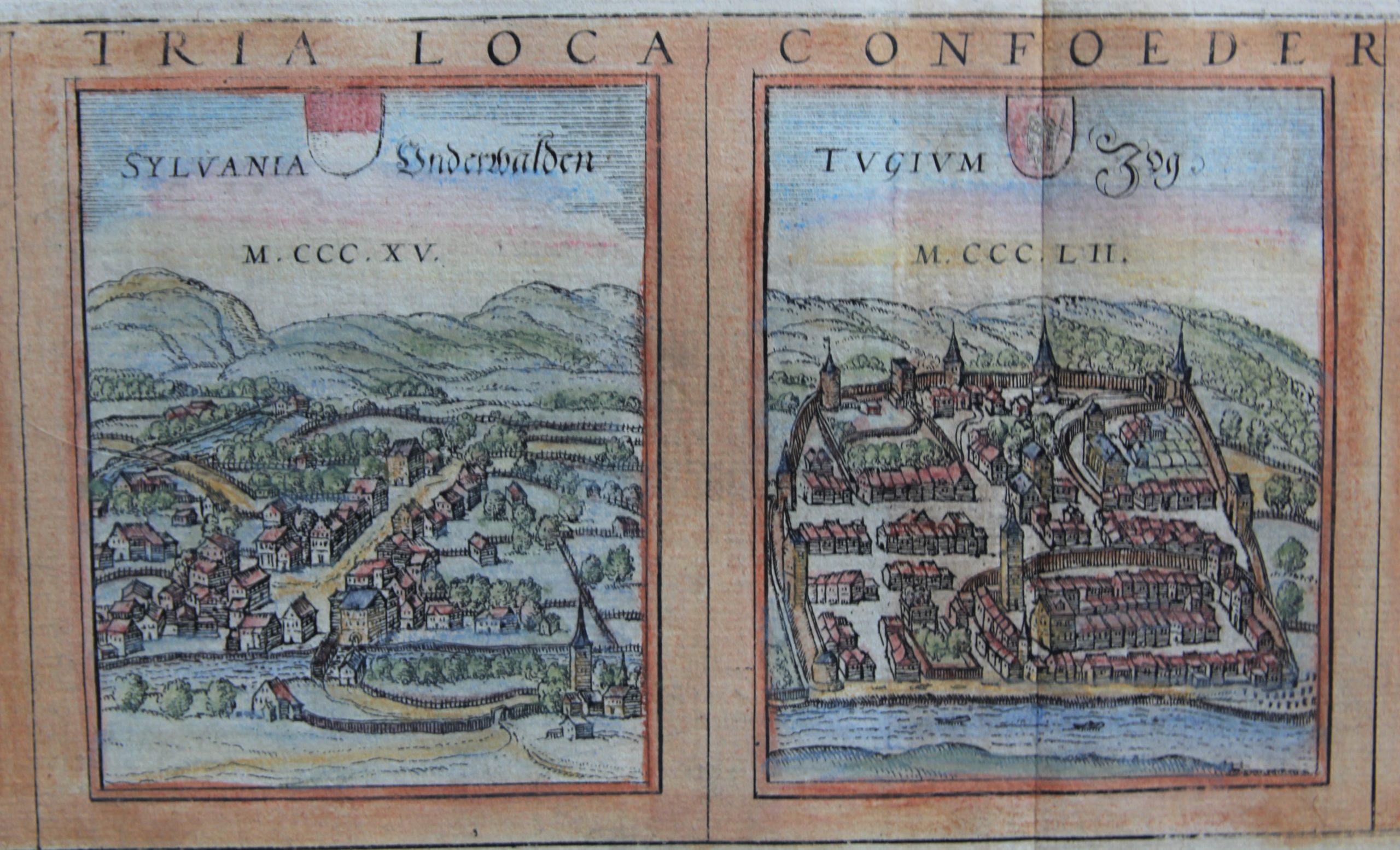
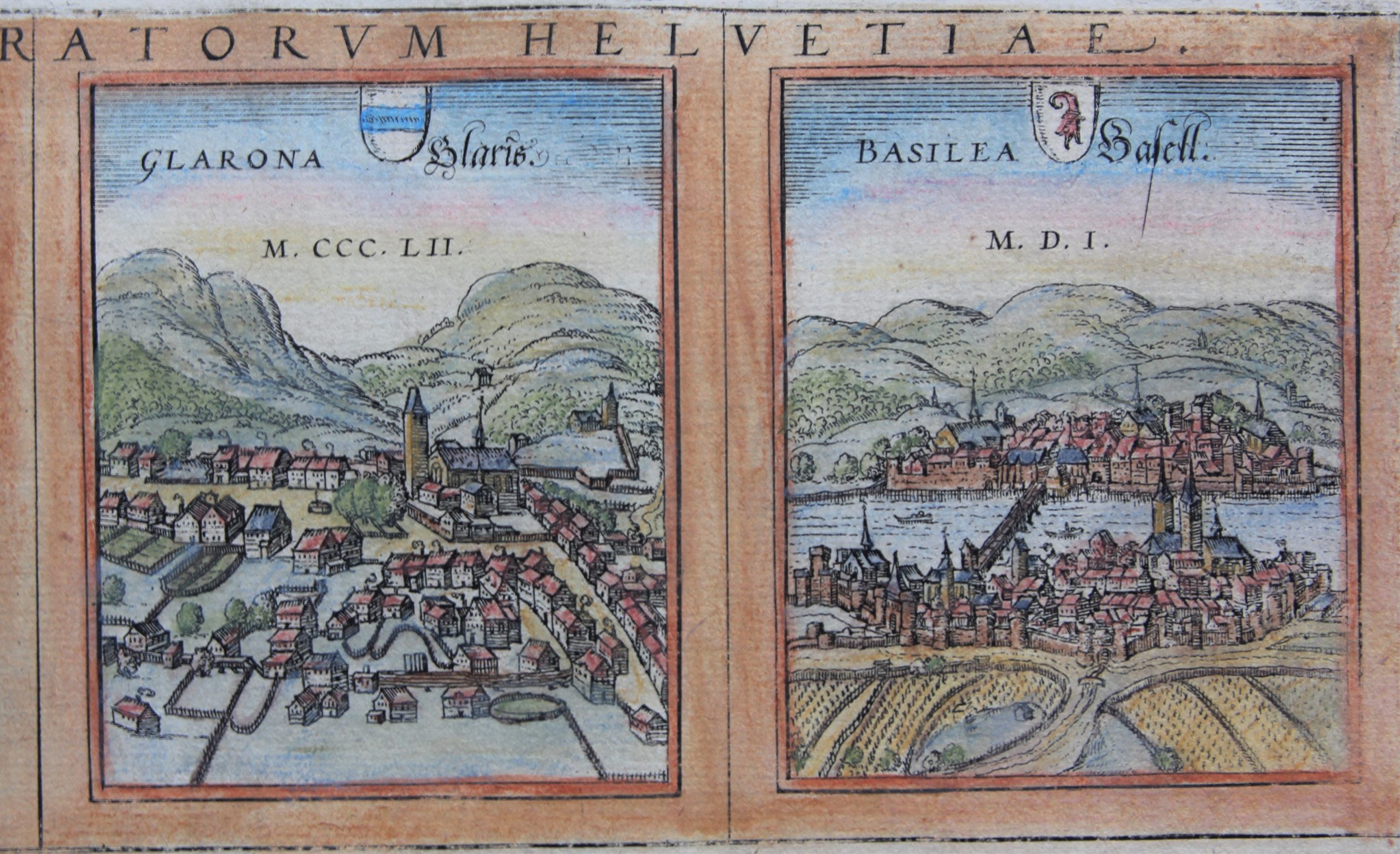
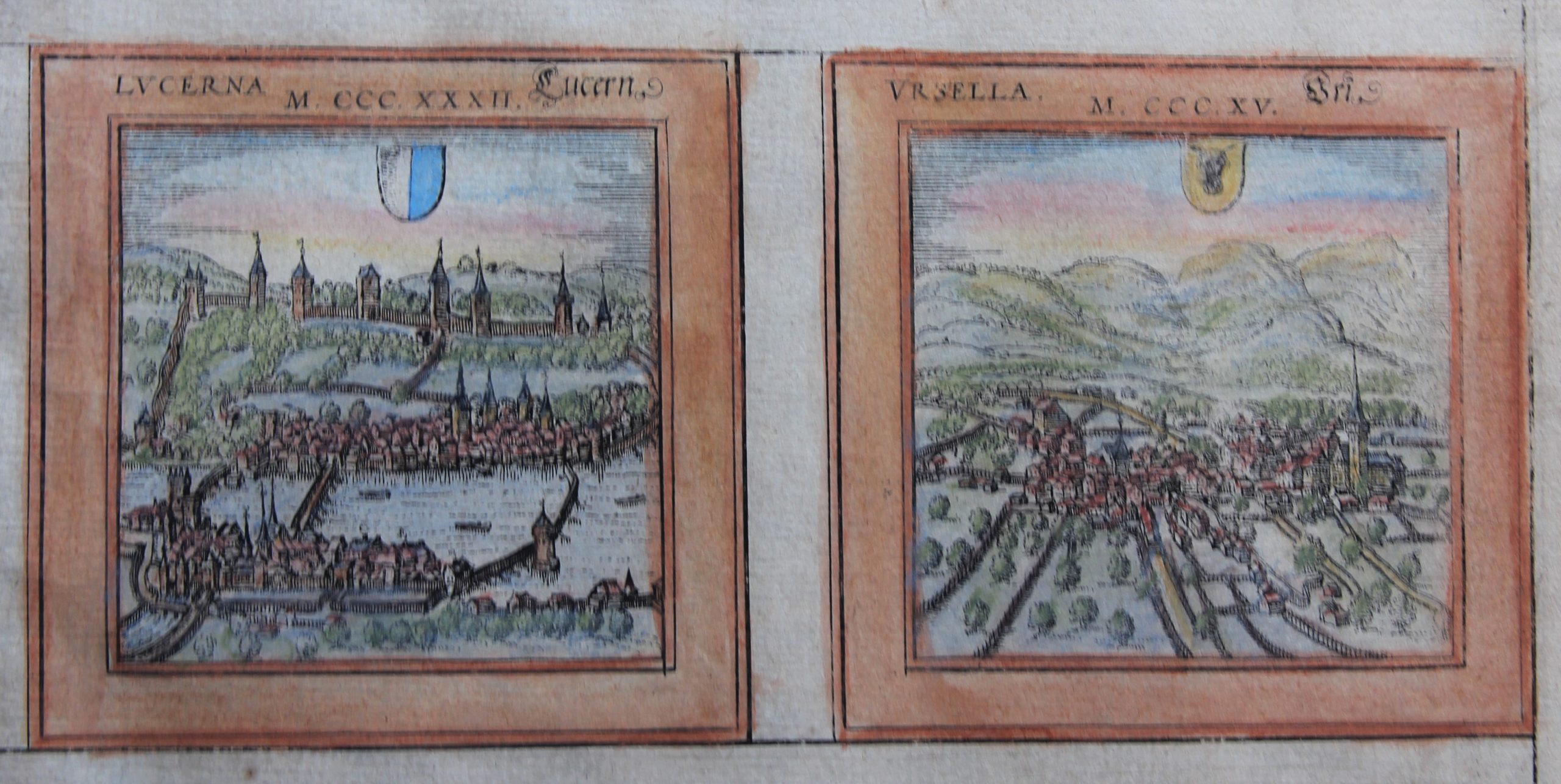

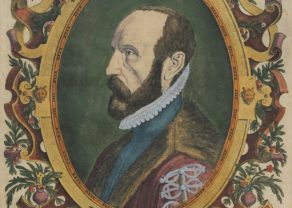
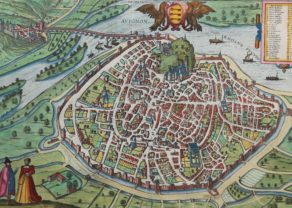
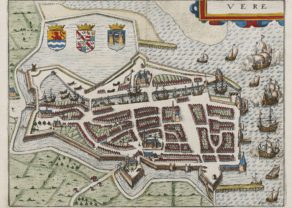
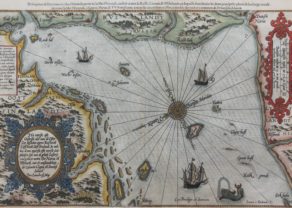
Braun and Hogenberg show the Swiss Confederation through its 13 Swiss cantons
On the Rütli meadow on the shores of Lake Lucern three cantons mutual alliagence: Schwyz, Unterwalden and Uri. The Swiss Confederation grew to 13 cantons. They are illustrated by views of their capitals with mention of the date of their joining the Confederation and with their coat of arms.
The towns are: Schwyz, Unterwalden, Zug, Glarus, Basel, Zurich, Bern, Lucerne, Uri, Fribourg, Solothurn, Schaffhausen and Appenzell. On the map also respectively called: Suicaia, Sylvania, Tuginum, Glarona, Basilea, Tygurum, Civitas Ursina, Lucerna, Ursella, Friburgum, Civitates Soloturensis, Schaphusia and Appencella.